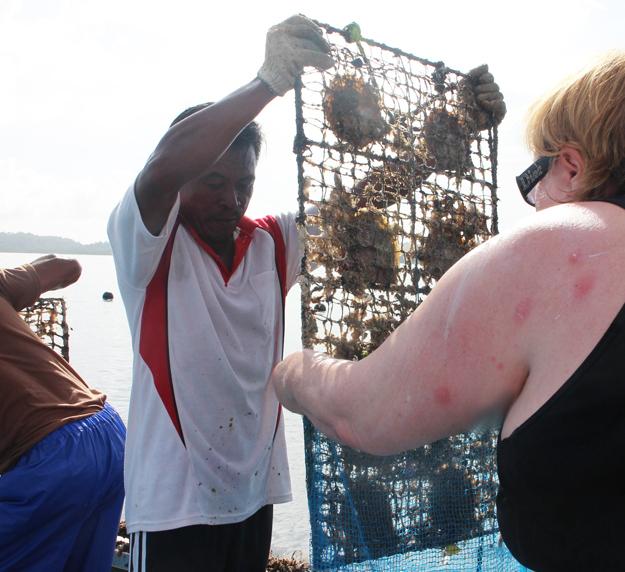This chapter of Pearls A Practical Guide looks at South Sea pearls, why are they so expensive? What colours are available, and what shapes?

One of the reasons why south sea pearls are so expensive is that what you normally see is the best of the best.
There are also pearls which are like these.
Sometimes it’s easy to see how this pearl happened and sometimes you can only stare and wonder what series of mishaps befell the poor oyster

Some of these deep gold south sea pearls show signs of being gas pearls – there is a clear space between the nacre and the the nucleus while in others there are layers of conchiolin stacked up like pages in a book. In this photo you can see the different sizes of nucleus which have been used.

But, happily more often you get pearls like these. That’s my hand, holding some freshly harvested pearls . The wet substance you see is oyster goo, which is miraculously wonderful for the skin because it contains lashings of hyaluronic acid. Betty Sue King and I discovered this when we went to work for a few days on an Indonesian pearl farm and our wet-all-day hands were super smooth instead of red and sore
Photo Betty Sue King

To sigh for, a day’s harvest at the pearl farm.
Photo Betty Sue King

Betty Sue King (Kings Ransom Pearls – Betty Sue King bettysue@pearlgoddess.com ) and I sat in the corner of the room with a bowl of oysters which had been removed from their shells and went through each one finding the deliberate pearls and the accidental keishi pearls
Photo Betty Sue King

Every so often our questing fingers would touch one of the symbiotic shrimps which lives in the shells. Eeeeek, the reflex twitch from them gave me the heebie-jeebies every time.
Photo Betty Sue King
Videos
Cleaning the shells…gold South Sea pearls, Indonesia

Here I am helping the work by holding the new netting so the basket can be dropped in. Note all the bites on my arm: in spite of all precautions I got bitten. Bugs find me delicious. Boo!
Photo Betty Sue King
